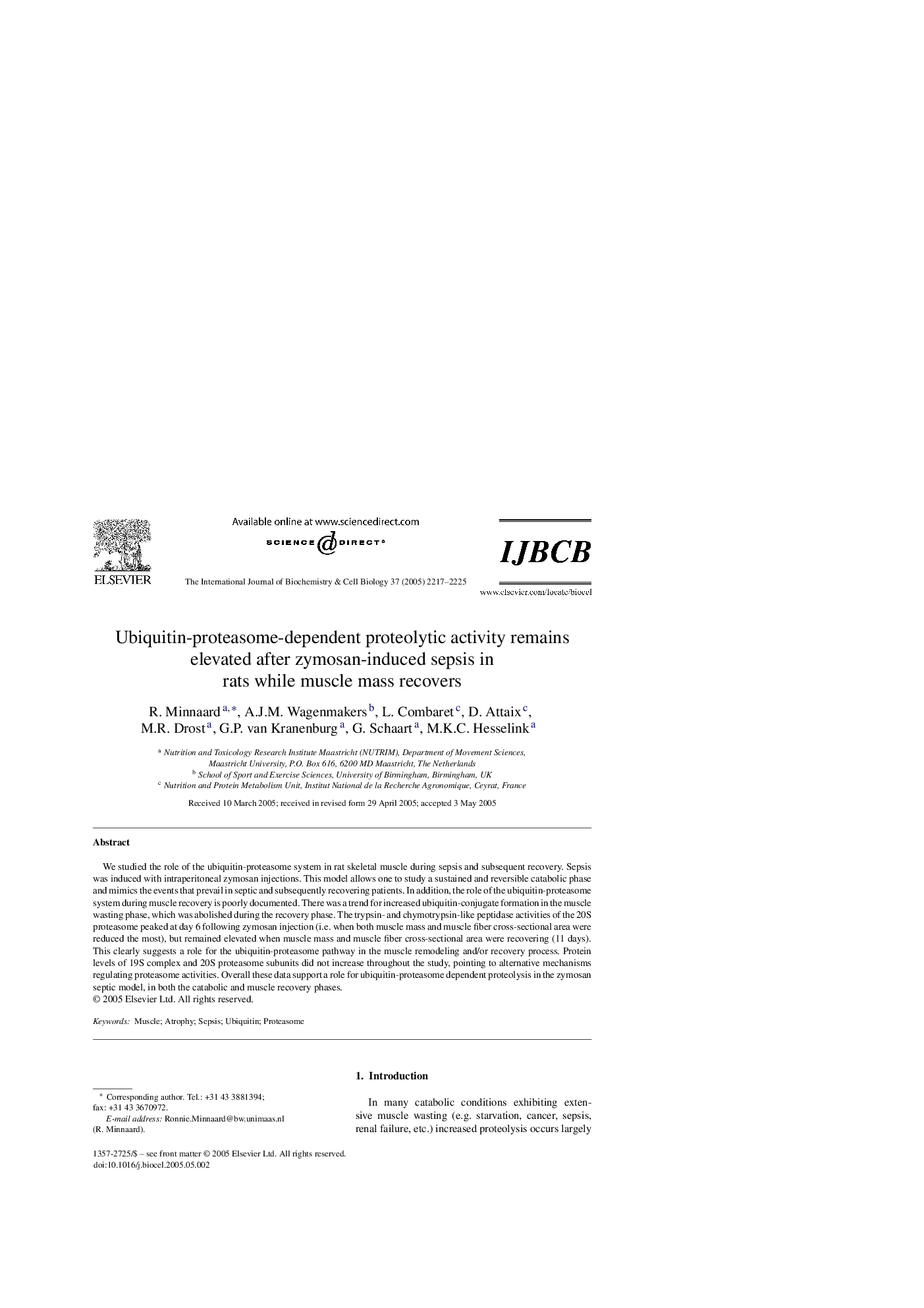| Article ID | Journal | Published Year | Pages | File Type |
|---|---|---|---|---|
| 1985018 | The International Journal of Biochemistry & Cell Biology | 2005 | 9 Pages |
Abstract
We studied the role of the ubiquitin-proteasome system in rat skeletal muscle during sepsis and subsequent recovery. Sepsis was induced with intraperitoneal zymosan injections. This model allows one to study a sustained and reversible catabolic phase and mimics the events that prevail in septic and subsequently recovering patients. In addition, the role of the ubiquitin-proteasome system during muscle recovery is poorly documented. There was a trend for increased ubiquitin-conjugate formation in the muscle wasting phase, which was abolished during the recovery phase. The trypsin- and chymotrypsin-like peptidase activities of the 20S proteasome peaked at day 6 following zymosan injection (i.e. when both muscle mass and muscle fiber cross-sectional area were reduced the most), but remained elevated when muscle mass and muscle fiber cross-sectional area were recovering (11 days). This clearly suggests a role for the ubiquitin-proteasome pathway in the muscle remodeling and/or recovery process. Protein levels of 19S complex and 20S proteasome subunits did not increase throughout the study, pointing to alternative mechanisms regulating proteasome activities. Overall these data support a role for ubiquitin-proteasome dependent proteolysis in the zymosan septic model, in both the catabolic and muscle recovery phases.
Related Topics
Life Sciences
Biochemistry, Genetics and Molecular Biology
Biochemistry
Authors
R. Minnaard, A.J.M. Wagenmakers, L. Combaret, D. Attaix, M.R. Drost, G.P. van Kranenburg, G. Schaart, M.K.C. Hesselink,
